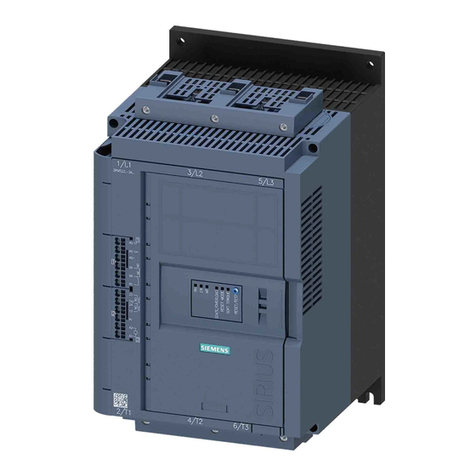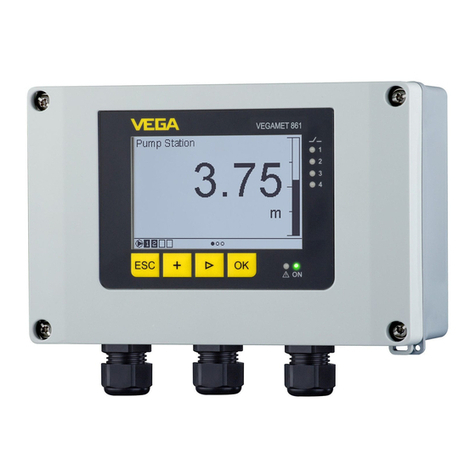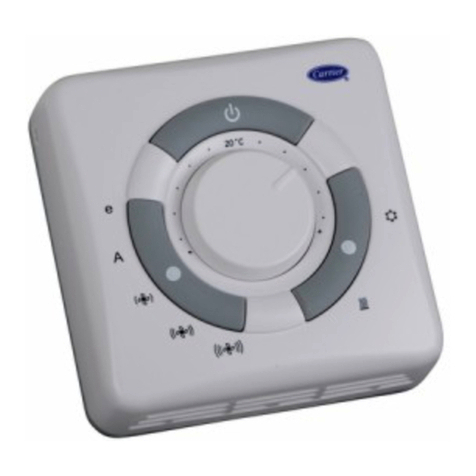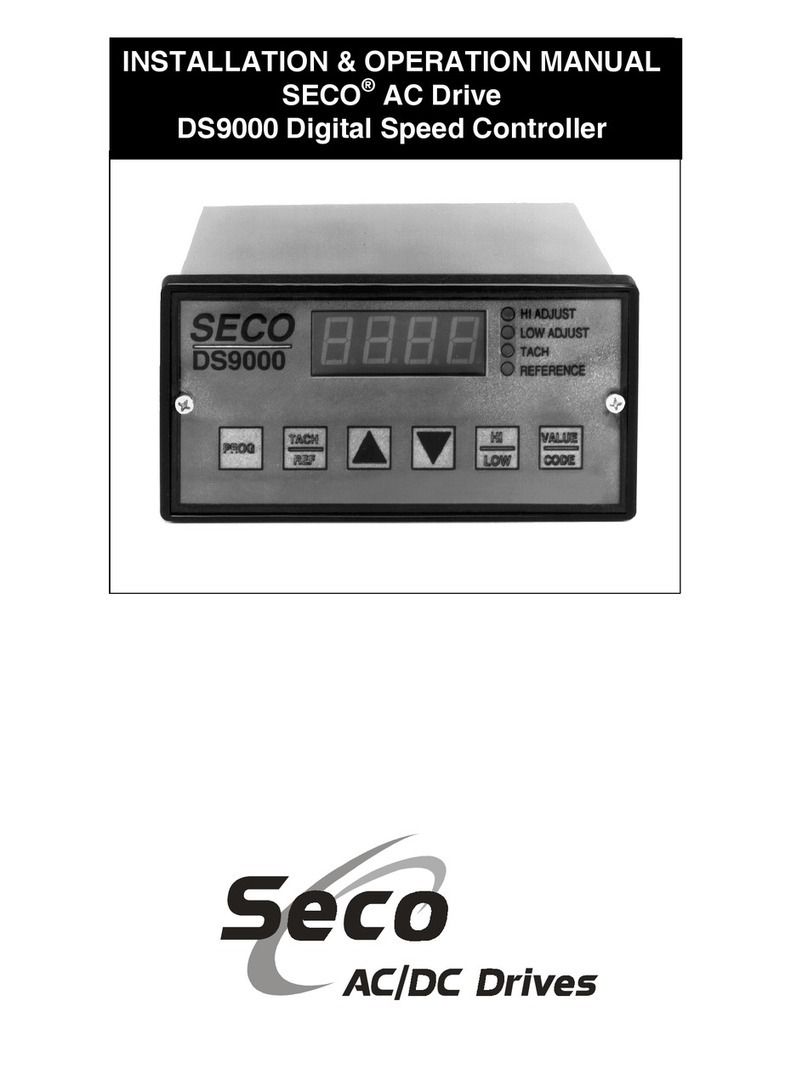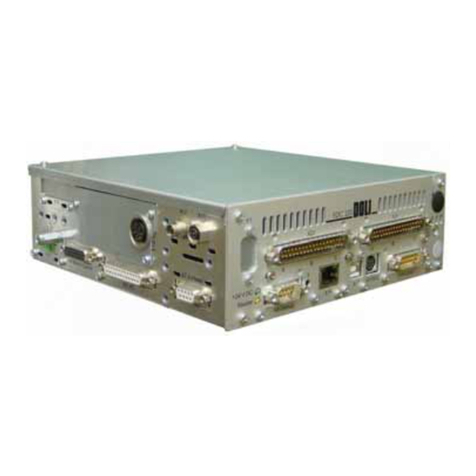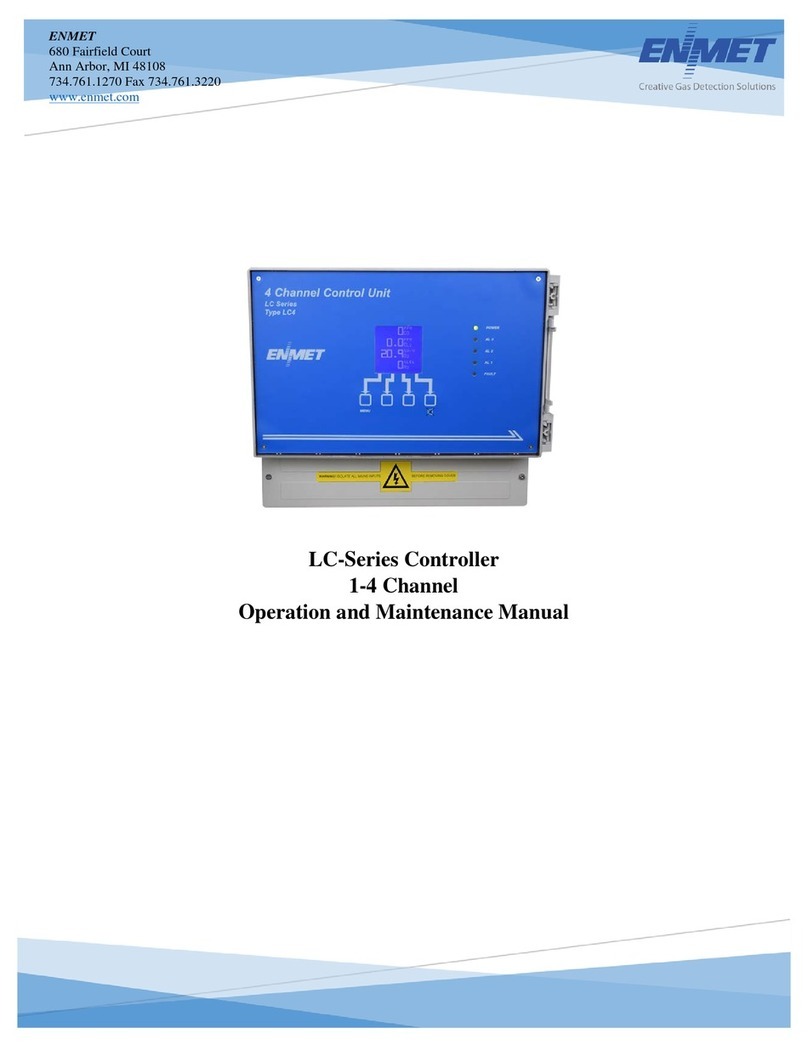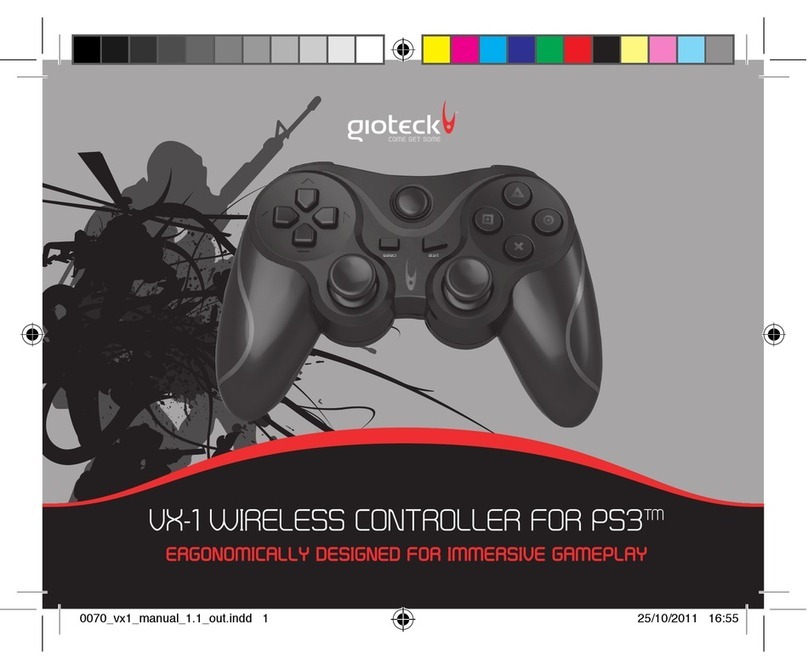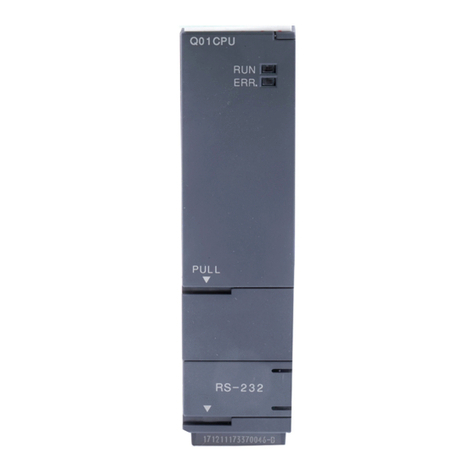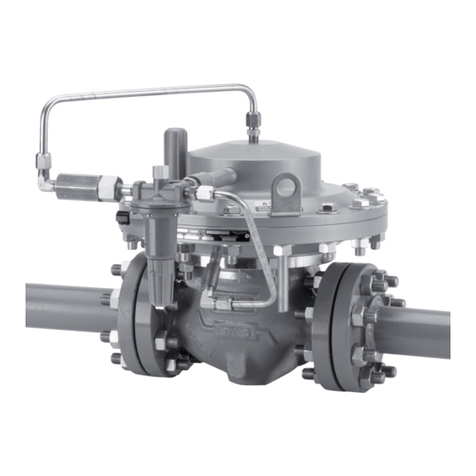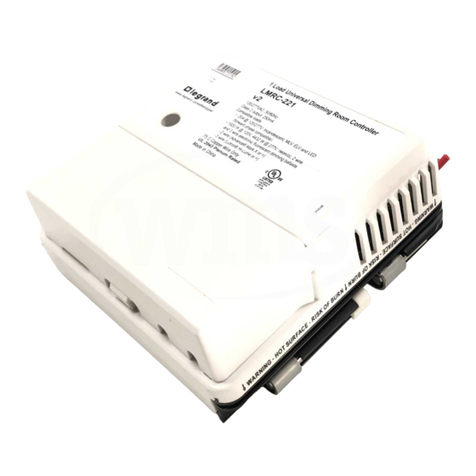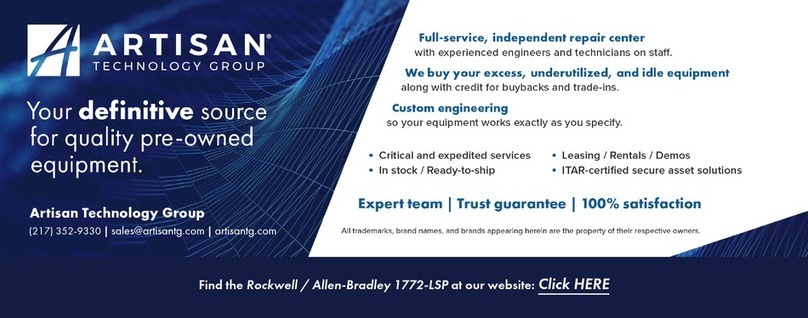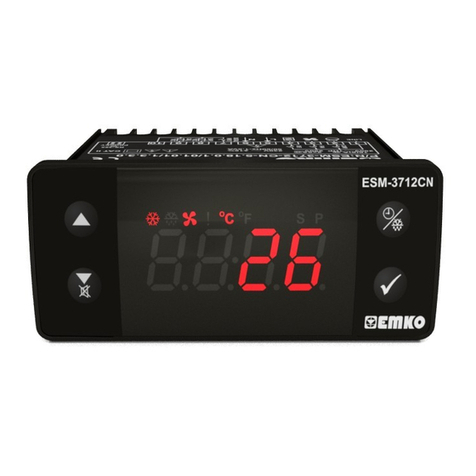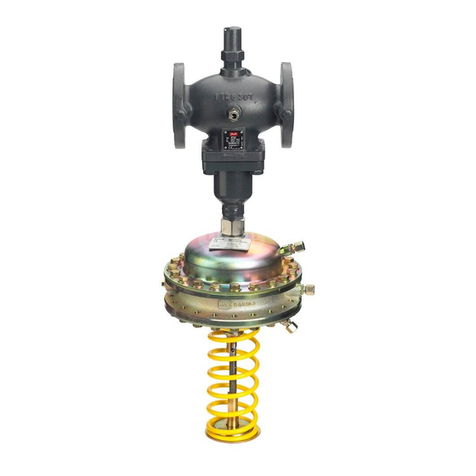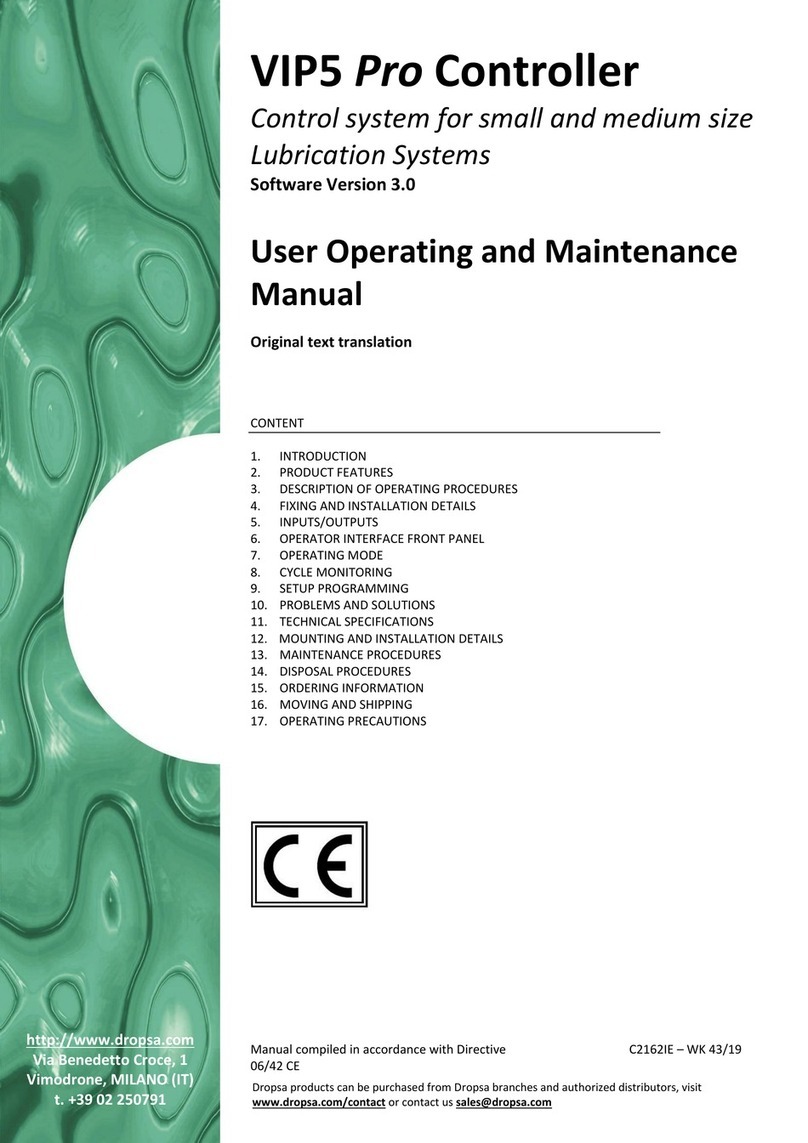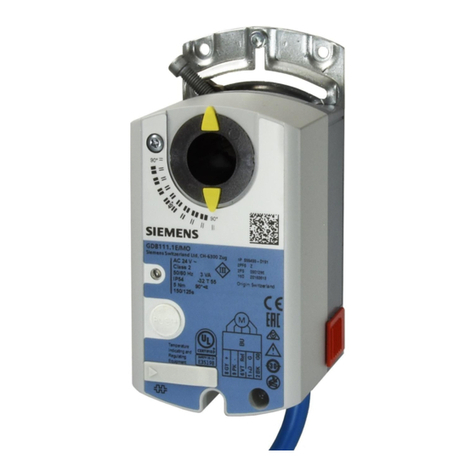Ecolab POSITRONIC IV User manual

POSITRONIC IV
Installation and Operation Manual
20428/0303/0804 Copyright Ecolab Inc. 2004 9448-2502

This page intended
to be blank.

iii
TABLE OF CONTENTS
POSITRONIC IV
Installation and Operation Manual
1.0 PREFACE........................................................................................................ 1
2.0 INTRODUCTION.............................................................................................. 1
3.0 SPECIFICATIONS........................................................................................... 2
4.0 INSTALLATION PROCEDURES .................................................................... 5
4.1 Multiple Pump Pneumatic Controller ....................................................... 5
4.2 Single Pump Pneumatic Controller ......................................................... 5
4.3 Pump Shelf with Pump............................................................................ 6
4.4 Anti-Siphon Valve.................................................................................... 6
4.5 Ball Foot Valve ........................................................................................ 6
5.0 TYPICAL MULTIPLE PUMP INSTALLATION ................................................ 7
6.0 OPERATIONS ................................................................................................. 8
7.0 TROUBLESHOOTING..................................................................................... 9
8.0 PERIODIC MAINTENANCE .......................................................................... 10
9.0 PUMP SERVICING........................................................................................ 10
10.0 INSTALLATION OPTIONS............................................................................ 11
10.1 Adding a Solenoid and Regulator ......................................................... 11
10.2 S-2000 for Multiple Pump Controller ..................................................... 11
10.3 S-2000 for Single Pump Controller........................................................ 11
11.0 GRAPHS AND TABLES................................................................................ 12
12.0 REPLACEMENT PARTS............................................................................... 13

This page intended
to be blank.

1
The pump construction of the Positronic IV, primarily Teflon
and polypropylene, is capable of handling corrosive fluids. It
has the capability to 55 psig (3.8 bar) discharge pressure.
Minimum flow rate is 15 oz/min (445cc/min.) (when using a
meteringorifice,
refertoSection11, page 12
)anda maximum
of 1.2 gal/min (4540 cc/min). As product viscosity increases
from that of water and/or suction lift increases from zero feet
to a maximum of 3-1/2 ft (107 cm), maximum flow rate will be
less than 1.2 gal/min (4540 cc/min).
Operating sequence of the system begins when an electric
signal (i.e., timer or conductivity sensor) entering the pneu-
matic controller energizes a solenoid to open an air valve
allowingregulated airpressuretopower thepneumaticpump.
The solenoid requires 110/120 VAC, 50/60 Hz single phase
electricity. The compressed air entering the Pneumatic Con-
troller must be filtered to 5 microns. No air lubricator is to be
used.
Each pump consumes a maximum of 3 scfm (1.4dm3/s) at the
maximum air pressure of 70 psig (4.8 bars). Pump delivery is
controlled by the air pressure setting of a regulator.
Components of the Positronic IV system consist of a pneu-
matic controller and an air operated double diaphragm pump.
Required accessories include a foot valve, anti-siphon valve
and a check valve.
1.0 PREFACE
It is imperative that all personnel concerned with the system
installation, operation and maintenance become familiar with
this manual. For a clean and functional installation, these
general instructions will provide the necessary guidance.
Understandingthis information will also helpyoumakeinstal-
lation modifications to meet the varying conditions and sur-
roundings.
WARNING:Theseinstallationandservicinginstruc-
tions are for use by qualified personnel only. The
installationmustbeinaccordancewithlocalplumb-
ing and electrical codes.
2.0 INTRODUCTION

2
3.1 Dimensions
• Height: 13-1/2 in. (34.3 cm)
• Length: 11-1/8 in. (28.3 cm)
• Width: 5-5/8 in. (14.3 cm)
3.2 Services Required
Compressed air: MAX 120 psig. (8.3 bars)
MIN. 80 psig (5.5 bars)
AIR FLOW 9 scfm (4.2 dm3/s) MIN.
Electrical: 110/120 VAC, 50/60 Hz Control signal
WARNING: - The supply air line must not contain an air
lubricator.
3.0 SPECIFICATIONS
3.3 Equipment Supplied
The Multiple Pump Pneumatic Controller is supplied with a
1/4" ball valve and 5 micron filter for the supply air. It contains
a 5 station manifold, with three stations having pump control
solenoids, regulators and two blanks for additional solenoids
and regulators.
The Multiple Pump Pneumatic Controller has an octal socket
fora 24VACrelayand 10pointterminalblockfor the120VAC
control signal.
Four wall mounting anchors and screws are included.
Figure 1

3
3.1 Dimensions
• Height: 9 in. (22.9 cm)
• Length: 8-3/4 in. (22.2 cm)
3.2 Services Required
Compressed air: MAX 120 psig (8.3 bars)
MIN. 80 psig (5.5 bars)
AIR FLOW 3 scfm (1.4 dm3/s) MIN.
Electrical: 110/120 VAC, 50/60 Hz.
WARNING: - The supply air line must not contain an air
lubricator.
3.3 Equipment Supplied
This controller is supplied with a 1/4" ball valve and an air
regulatorwitha5micronfilterforthesupplyair,apumpcontrol
solenoid, and a 4x4x2 PVC junction box. Four 8-32 x 1/2"
mounting screws are included. A length of 1/4" O.D. plastic
tubing for the pump air line is supplied.
3.0 SPECIFICATIONS (con't.)
Figure 2
SINGLE PUMP PNEUMATIC CONTROLLER

4
3.1 Dimensions (Pump Shelf with Pump-Fi ure 3)
• Height: 8-1/4 in. (21 cm)
• Length: 7-3/4 in. (19.7 cm)
• Width: 9-1/2: (24.1 cm)
3.2 Services Required
Compressed air: MAX 70 psig (4.8 bars)
AIR FLOW 3 scfm (1.4 dm3/s)
Thecompressedairisreceivedfromthepneumaticcontroller.
3.3 Equipment Supplied
One pump is supplied with the pump shelf. Supplied for the
pump are the product inlet and outlet elbows and the air
connectionfitting.Includedwiththepumpshelfarethemount-
ing fasteners.
3.0 SPECIFICATIONS (con't.)
3.1 Dimensions (Pump Bracket - Fi ure 4)
• Height: 4-3/8 in. (11.1 cm)
• Length: 23-1/8 in. (58.7 cm)
• Width: 3/4 in. (1.9 cm)
3.2 Description
This bracket is capable of supporting (3) pump shelves.
PUMP SHELF WITH PUMP
Figure 3
Figure 4

5
4.1 Multiple Pump Pneumatic Controller
HINT: If this system is replacing a different system, label
anycontrolwirespriortodisconnectingthatwillberecon-
nected to the new system.
1. Locate a practical place for the Pneumatic Controller so
theair lines fromthe controller to the pump do notexceed
50ft(15meters).Also,considertherelativelocationofthe
compressed air source that will be connected to the
controller's air inlet.
(See item 4).
2. For air lines to pumps, 1/4" O.D. tubing is recommended
for lengths up to 25' and 3/8" O.D. tubing is used for
lengths from 25 to 50 ft.
Refer to Figure 5.
3. Mount the controller using the enclosed wall mount an-
chors and screws.
4. For the main air supply line, due to air supply require-
ments, it is recommended to use 3/8" sch. 40 pipe mini-
mum for a maximum length of 50 ft.
5. Connect supply air line to the ball valve preceding the
5 micron filter. Leave the ball valve closed.
Refer to
Figure 5.
NOTE: Do not use an air lubricator.
6. Turn regulator control knobs full counter clockwise. This
will effectively shut off the air supply to the pump until
regulating to desired pressure.
7. Connect pump air lines to the fittings on the right side of
the controller by wrench tightening the fitting nuts, maxi-
mum of one turn beyond finger tight.
Refer to Figure 5.
8.
Connect 110/120 VAC, 50/60 Hz control wire to the right
side of the 10 point terminal block.
Refer to Figure 6.
NOTE - Remove white common wire harness when
more than one process controller is entering the
pneumatic control cabinet. Use individual neutrals/
commons in place of the harness.
9. Connectagroundwiretothepostlocatedtotherightofthe
terminal strip.
Refer to Figure 6.
4.2 Sin le Pump Pneumatic Controller
1. Mount the controller to the left side of the pump cabinet
using the four 8-32 x 1/2" screws that are supplied.
Refer
to Figure 8.
2. Bring a 110/120 VAC, 50/60 Hz signal into the bottom of
the junction box and wire nut to the solenoid leads.
Refer
to Figure 7.
3. Connect supply air line to the ball valve preceding the
5 micron filter/regulator. Leave the ball valve closed.
NOTE - Do not use an air lubricator.
4. Turn regulator control knob full counter-clockwise.
5. Install free end of the 1/4 O.D. tubing to the air inlet side
ofthe pump. Thetypeoffittingon the pumptoreceivethis
tubing requires approximately 1/2 inch insertion of the
tube to be automatically retained. Make a reference mark
1/2" from the tube and prior to the insertion.
Refer to
Figure 8
4.0 INSTALLATION PROCEDURES
Figure 5
Figure 6
Figure 7

6
Toremovethetubefromthistypeoffitting,firstpullorpush
the gray collar towards the fitting body, then pull out the
tube.
4.3 Pump Shelf with Pump
1. The shelf may be directly mounted on a wall using the
supplied wall mount anchors and screws. For multiple
pump mountings, the Multiple Pump Mounting Bracket
may be used.
Refer to Section 3, page 4
.
2. Mount the shelf so the pump inlet is a maximum of 3-1/2
ft. (107 cm) above the drums lowest possible liquid level
and 10 ft. (3 meters) maximum horizontal. Always locate
the pump above the product drum.
3. Take the free end of the "Pump Air Line" coming from the
pneumaticcabinetandinsertitapproximately1/2inchinto
the fitting on the side of the pump. It will be automatically
retained. Make a reference mark 1/2" from the tube and
prior to the insertion
Toremovethetubefromthistypeoffitting,firstpullorpush
the gray collar towards the fitting body, then pull out the
tube
4. If a 3/8" OD pump air line is required (
See Section 4.1 #2
on page 5
), it may be adapted to the pump fitting as
illustrated.
Refer to Figure 9.
5. For product lines, use 19/32" OD x 3/8 ID EVA reinforced
tubing for the discharge line. Install this line to the top
pump port.
6. Install1/2"ODx3/8"IDpolyethyleneorEVA(unreinforced)
tubing for the intake line. The unreinforced EVA tubing is
preferred because of its flexibility. Install this line to the
bottom pump port.
7. Install on the intake line a foot valve.
Refer to Section 4.5
below.
4.4 Anti-Siphon Valve
Install the anti-siphon valve according to the direction of the
specific installation case. Match anti-siphon valve to product
being dispensed. See replacement parts.
CASE 1 - (injecting into the suction side of the CIP pump and
when the chemical feed pump is above injection point).
1. Placean anti-siphon valve within 2 ft of the chemicalfeed
pump in its discharge line. Also install a second anti-
siphon valve ahead of the check valve at the injection
point. Condition of this case is based on the pump being
above the product tank.
Refer to Figure 10.
CASE 2 - (Injecting into the suction side of the CIP pump and
when the chemical feed pump is below injection point).
1. Placeananti-siphonvalveaheadofthecheckvalveatthe
injection point.
Refer to Figure 10.
4.5 Ball Foot Valve
1. The ball foot valve is used along with the drum probe.
4.0 INSTALLATION PROCEDURES (con't)
Figure 8
Figure 9
Figure 10

7
5.0 TYPICAL MULTIPLE PUMP INSTALLATION

8
6.1 Multiple Pump Pneumatic Controller
1. Check that all pump control regulator adjustment knobs
are in the full counter-clockwise position.
2. Check that the pump intake probes are in the appropriate
products.
3. Open the air inlet ball valve.
Refer to Figure 11.
4. While pressing the manual operator button on the sole-
noidvalvewitha"pen tip",rotatetheregulator adjustment
knob until the pump starts (approximately 18 psig or 1.2
bars)
5. Continue to increase the air pressure to establish the
pressure needed for the required flow rate.
Refer to the
graphsinSection11,page12
touseasaset-upguideline
to determine this approximate air pressure.
6. Fine tune the delivery by taking a solution sample and
titrate it.
7.
Referto paragraph "6.3 Pump"
below for additional pump
delivery information when less than 20 oz./min.
6.0 OPERATIONS
6.2 Sin le Pump Pneumatic Controller
1. Checkthattheregulatorcontrolknob isinthefullcounter-
clockwise position.
2. Check that the pump intake probe is in the product.
3. Open the air inlet ball valve.
4. While pressing the manual operator button on the sole-
noidvalvewitha"pen tip",rotatetheregulator adjustment
knob until the pumps starts (approximately 18 psig or 1.2
bars).
Refer to Figure 12.
5. Continue to increase the air pressure to establish the
pressure needed for the required flow rate.
Refer to
graphs in Section 11, page 1
2 to determine this approxi-
mate air pressure.
6. Fine tune the delivery by taking a solution sample and
titrate it.
7.
Referto paragraph "6.3 Pump"
below for additional pump
delivery information when less than 20 oz./min.
6.3 Pump
Flow rate is primarily regulated by controlling the pump air
pressure. An air pressure of at least 20 psig (1.4 bars) (for
water) is required to have the pump operate.
Alternatively the flow rate may be regulated by the discharge
pressure. It may become necessary to control the delivery by
usinga needle valveororificeinthedischarge line toincrease
the discharge pressure when the required pump operating air
pressure is at the minimum and the flow rate must be further
reduced. Referencing the performance curves in
Section 11,
page12
,youwillseeforagivenairpressure how the flow rate
decreases as the discharge pressure increases. An example
of when a needle valve or orifice will help to increase the
discharge pressure is for tank top feeding. The orifice should
beusedratherthentheneedlevalvewhenflowrateslessthan
20 oz./min. (590 cc/min.) are needed.
Refer to Section 11,
page 12 - Table 1
for Orifice options.
1. Place the orifice assembly in the discharge line.
2. Fine tune the delivery by taking a solution sample and
titrate it.
Figure 11
Figure 12

9
7.0 TROUBLESHOOTING
Problem Cause or Failure Mode
WARNING - Wear safety goggles, rubber gloves and other required protective clothing when removing the pump
from its circuit. Proceed with caution when disconnecting the discharge line because it may be pressurized. When
disconnecting a discharge line fitting, place a rag over the fitting to shield yourself from any possible spray.
Action
1. Pump will not run Air line blocked
Pump directional valve in neutral
position
No electrical power to the unit
Low air pressure
Check air line for passage of air.
Press white plastic reset button on the
pump below air supply port
Take corrective action (fuses, timer,
solenoid coil, etc,)
Check plant air supply.
2. Pump will not prime Liquid intake tube is blocked
No air to the pump
Intake line fittings not tight
Take corrective action
Take corrective action
Take corrective action
3. Pulsating Flow Some pulsating flow is normal
Clogged check valve, intake or dis-
charge
Air in the intake line
None Required
Disassemble
per Section 9, page 10
.
Clean check valves, then reassemble.
Clean product tank and intake line.
Check product reservoir for being
empty, check intake line for cracks and
loose fittings, check vertical studs
(Fig
14, page 10)
for tightness.
4. Low Flow Rate Discharge line blocked
Liquid intake tube is blocked
Debris caught in pump valves
Check the check valve or anti-siphon
valve
Take corrective action
Remove pump manifolds to clean
valves.
Refer to Section 9, page 10
5. Discharge Line Drains Anti-siphon valve leaks
Anti-siphon valve not properly installed
Replace valve
See Section 4, paragraph 4.4, page 6
6. Intake Line Drains Foot valve leaks Disassemble, clean, and reassemble

10
8.0 PERIODIC MAINTENANCE
1. Manually drain air filters monthly. These filters have an
automatic drain, but a monthly check should be done.
Annually replace filter element.
Refer to Figure 13.
2. Check day tank(s) for debris.
3. Check exterior of fittings, anti-siphon valves and check
valves for leaks.
4. Check product and air tubing for cracks or damage.
9.0 PUMP SERVICING
WARNING-Wearsafetygoggles,rubberglovesandother
required protective clothing when removing the pump
fromitscircuit.Proceedwithcautionwhendisconnecting
the discharge line because it may be pressurized. When
disconnectingadischargelinefitting,placearagoverthe
fitting to shield yourself from any possible spray.
9.1 Pump Check Valve Servicin
1. For safety reasons, disconnect air line a pump.
See
Section 4, paragraph 4.3, page 6
for method of line
disconnection.
2. Disconnect product discharge line at the CIP unit.
3. Reconnect air line at the pump.
4. Pump water to flush out the product within the pump.
5. Remove pump from shelf.
6. Using two-10mm wrenches, one for each nut at opposite
endsofaverticalstud,removethenuts andwashersfrom
the four vertical studs.
7. Separate the discharge (top) manifold from the pump.
Removetheo-rings,valveguides,valvesandvalveseats.
Examine the valves and valve seats for damage or em-
bedded debris.
Refer to Figure 14.
8. Turn the pump upside down and separate the intake
(bottom) manifold. Remove the o-rings, valve seats and
valves.Examinethevalveseatsandvalvesfordamageor
embedded debris.
HINT - If reusing the o-rings replace with the beveled side
towards the mating part (valve seat or guide).
Refer to
"DETAIL" in Figure 14.
HINT - Before reinstalling the vertical studs, note that the
studshaveashorterthreadlengthononeendasopposed
to the other. Place the nuts and washers on the short end
of the studs before installation.
9. Reassemble the intake side first. Begin by squarely plac-
ing the valve into the pump, lay the valve seat onto the
valve and position the o-ring. Next, install the manifold,
install the mounts and insert the four studs.
10. Holding the intake manifold firmly on the pump, turn the
pump right side up and place it on a work surface.
Figure 13
Figure 14

11
11. Begin assembling the discharge side by installing the
valve seat. Squarely locate the valve onto the seat. While
keeping the valve centered install the valve guide. Install
the o-ring, manifold and secure with washers and nuts.
12. Tighten nuts to 35 to 45 in-lbs.
10.0 INSTALLATION OPTIONS
10.1 Addin a Solenoid and Re ulator
1. Remove the ty-wraps that are supporting the solenoid
leads inside the control cabinet.
2. Remove the (10) screws on the exterior right side of the
control cabinet that are holding the air manifold mounting
panel to the cabinet. With the manifold attached to the
panel, pull the panel away from the cabinet.
3. To allow mounting a solenoid and regulator, remove the
port covers from the next available manifold station.
4. Mount the solenoid and regulator as shown in
Figure 15
.
Secure their mounting screws firmly.
5. Remount the manifold panel.
6. Attachthe solenoid leadstothenextavailableposition on
the terminal block.
7. Attach the ty-wrap mount in the cabinet.
8. Individuallybundle the solenoid leads andsecurethemto
a mount with a ty-wrap.
9. Install the pressure gauge by inserting the gauge tube
end, about 1/2 inch, into the mating part on the solenoid
valve.
10.2 S-2000 for Multiple Pump Controller
1. Signal wires from the S-2000 should be connected to
terminals 2 and 7 of the octal socket. Remove from the
socketthepurplejumperwirebetween1and3.Installinto
the socket the 24 VAC relay (item 7 "Replacement Parts"
page 13). This will control "Pump 1".
Refer to Figure 16
.
10.3 S-2000 for Sin le Pump Controller
1. If a 24 VAC signal is used, make an additional hole in the
junction box (7/8 diameter is required for 1/2 electrical
conduit) for the 24 VAC signal. Use the special 24 VAC
relay assembly, (Item 12, "Replacement Parts" on page
13). Slide this assembly into the junction box. R
efer to
Figure 17.
9.0 PUMP SERVICING (con't.)
Figure 15
Figure 16
Figure 17

12
11.0 GRAPHS AND TABLES
The following orifice flow rate information is to be used as a guide.
ORIFICE AIR PRESS. PRODUCT FLOW RATE
-psig (bar) oz/min. (cc/m)
25 (1.7) 15 (440)
30 (2.1) 17.6 (520)
#56 DRILL 40 (2.8) 22.7 (670)
50 (3.4) 27.4 (810)
25 (1.7) 21 (620)
30 (2.1) 25 (740)
#55 DRILL 40 (2.8) 29.4 (870)
50 (3.4) 33.8 (1000)
TABLE 1

13
REPLACEMENT PARTS POSITRONIC IV
SECTION:
REF.
NO. PART NO. DESCRIPTION
1 8528-9221 COIL 120/110V MAC 35 SERIES
2 8526-5007 SLND VLV 1/8 FPT 120/110V 6.5 W
NC
3 8420-0351 REGULATOR AIR MAC 35A-00L
4 8538-0103 FILTER ELEMENT 5 MICRON
POLYP
5 8539-0284 PRSR GA 1-1/2 D. 1/8 MPT 100PSI
6 •9448-1272 SLND/REG KIT (INCLUDES REF
NOS. 2,3 AND 5)
7 8300-0174 RLY PLUG-IN 24V DPDT 10 AMP
8 8480-4673 PUMP MANIFOLD
9 8539-0086 PRSR GAUGE 2D 1/8 100# CB
10 8526-5015 SOLENOID VALVE 1/4 3 WAY - AIR
11 8528-9213 COIL 120/110V MAC 100 SERIES
12 9448-1280 RELAY ASM. PKD.
13 8300-0232 RELAY DPDT 10A 24VAC W/CVR
14 8420-0369 REG/FILTER AIR 1/4 NPT WATTS
15 8480-4657 YAMADA VALVE REPAIR KIT
(KIT INCLUDES PARTS FOR ONE
PUMP)
REF.
NO. PART NO. DESCRIPTION
16 •9448-1306 ORIFICE KIT #56
17 •9448-1298 ORIFICE KIT #55
18 •8552-3108 UNION - REDUCING
19 •8480-4665 YAMADA DIAPHRAGM KIT
20 8460-4834 YAMADA PUMP
21 9204-0112 ANTI-SIPHON VLV VITON
22 9204-1128 ANTI-SIPHON VLV KIT VITON
23 8578-5111 CONNECTOR 3/8 IDH X 3/8 MPT
POLYE
24 8578-5418 ELBOW 3/8 IDH X 3/8 MPT POLYP
25 8730-1131 HOSE CLAMP 5/16 TO 7/8 SS
26 8578-5392 ELBOW 3/8 HS X 1/4 MPT POLYP
27 9263-0573 BALL CHK VLV ASM 3/8 FPT
28 9448-2502 INSTALLATION AND OPERATION
MANUAL
•9204-1150 ANTI-SIPHON VLV KIT EPDM
•9204-1000 ANTI-SIPHON VLV KIT SILCONE
• PART NOT SHOWN
THE REPLACEMENT PARTS PAGE OF THIS MANUAL MAY NOT
CORRESPOND TO THE EQUIPMENT REPAIR PARTS MANUAL PAGES
Table of contents
